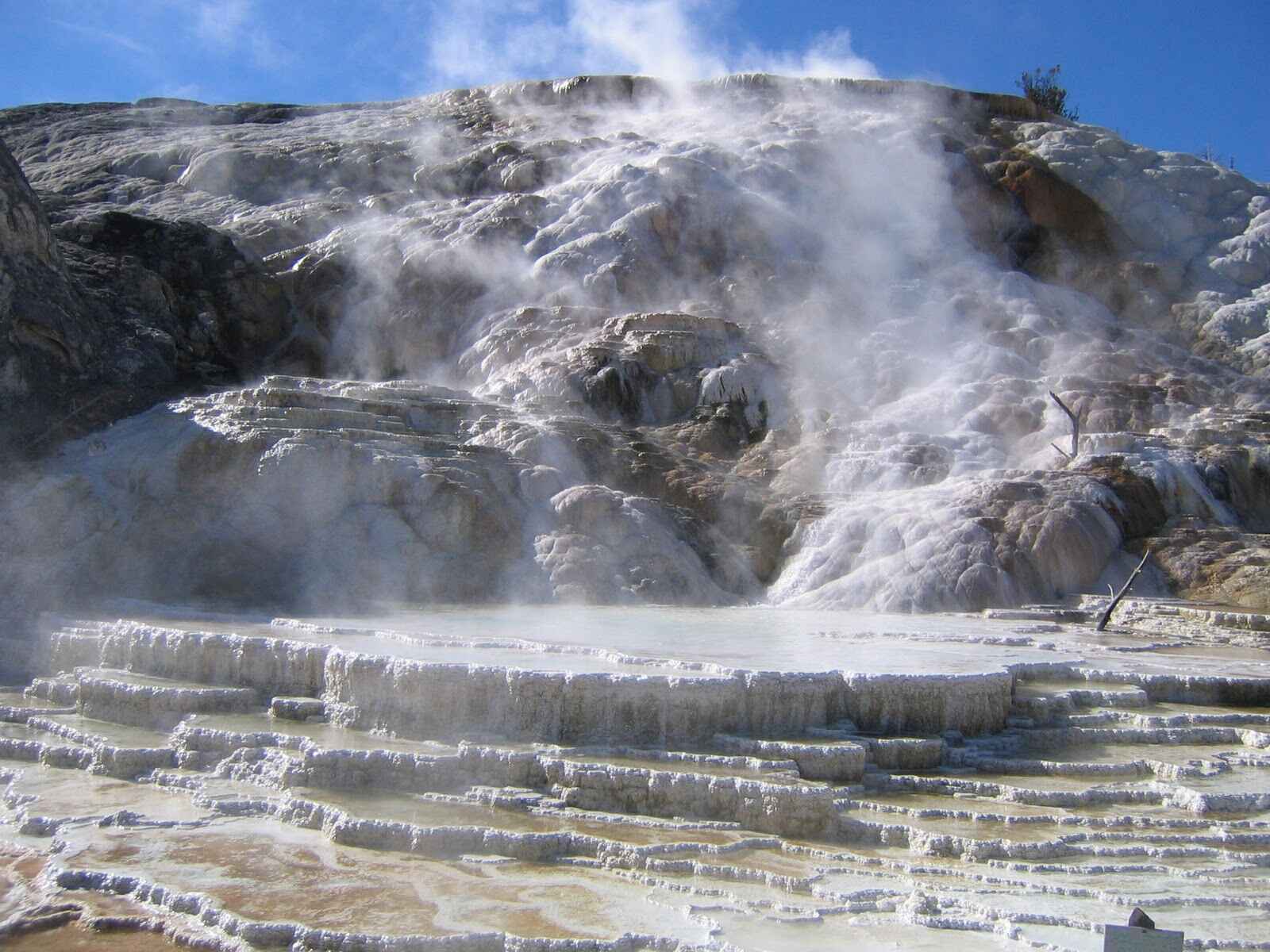
Hotspots are a fascinating phenomenon in the world of geology. These geological hotspots are areas on the Earth’s surface where molten rock, or magma, rises to the crust through cracks and fractures. As the magma reaches the surface, it can create volcanic activity, forming new islands, mountains, or even entire chains of volcanic islands.
Not all volcanic activity is associated with tectonic plate boundaries. Hotspots, on the other hand, offer a unique insight into the dynamic nature of our planet. They are thought to be caused by plumes of hot material rising from deep within the Earth’s mantle, piercing through the moving tectonic plates.
In this article, we will explore 12 astonishing facts about hotspots, shedding light on their origins, effects on the Earth’s surface, and the incredible geological features they create. So, sit back, and prepare to be amazed by the wonders of hotspots!
Key Takeaways:
- Hotspots are fixed spots of intense volcanic activity, creating chains of islands as tectonic plates move. They can even cause continents to split apart, shaping the Earth’s landscape in astonishing ways.
- Hotspots, fueled by mantle plumes, can be found under oceans and continents, shaping the Earth’s surface over millions of years. They help scientists track plate motion and understand the planet’s dynamic nature.
Hotspots are stationary volcanic regions?
Hotspots are geological marvels that defy the conventional movement of tectonic plates. Unlike most volcanoes that occur at plate boundaries, hotspots are fixed locations of intense volcanic activity.
Hotspots can create chains of volcanic islands?
As tectonic plates shift, the hotspot remains stationary, resulting in the creation of a volcanic island. Over time, as the plate moves away from the hotspot, a chain of islands is formed, with the youngest volcanic activity occurring nearest to the hotspot.
The Hawaiian Islands were formed by a hotspot?
The beautiful Hawaiian Islands are a testament to the power of hotspots. The ongoing volcanic activity of the Big Island of Hawaii is a direct result of the hotspot beneath it, while older islands towards the northwest have progressively eroded.
Hotspots can cause continental rifting?
In rare cases, hotspots can trigger the splitting apart of continents, leading to the formation of rift valleys. The East African Rift System, for example, is believed to have been initiated by a hotspot beneath the region.
Hotspots can be found beneath oceanic plates?
While hotspots are commonly associated with volcanic islands, they can also be found beneath the oceanic plates, resulting in submarine volcanoes and seamounts. These underwater volcanic features contribute to the dynamic nature of the Earth’s crust.
The Yellowstone hotspot is a supervolcano?
The Yellowstone hotspot, located beneath the Yellowstone National Park in the United States, is an example of a hotspot that exhibits supervolcano characteristics. The last major eruption occurred approximately 630,000 years ago.
Hotspots can have a lasting impact on the landscape?
As hotspots produce volcanic activity over long periods, they shape the landscape significantly. The unique formations left behind by hotspots, such as calderas, lava fields, and volcanic cones, contribute to the geological diversity of an area.
Hotspots can be used to track plate motion?
By studying the age progression of islands or volcanic features associated with a hotspot, scientists can gain insights into the direction and speed of plate motion. This information helps in understanding the dynamics of Earth’s tectonic plates.
Hotspots can occur in continental interiors?
While hotspots are commonly associated with oceanic activity, they can also manifest within continental interiors. Examples include the volcanic activity in Yellowstone and the Eifel region in Germany.
Hotspots are fueled by mantle plumes?
Mantle plumes are areas deep within the Earth’s mantle where abnormally hot and buoyant material rises, supplying the heat and magma required to fuel hotspots. The exact mechanisms behind mantle plumes are still a topic of scientific research.
The Galapagos Islands were formed by a hotspot?
The unique Galapagos Islands, famous for their diverse wildlife, have their origins in a hotspot beneath the Pacific Ocean. The volcanic activity associated with the hotspot has given rise to the distinct geology and ecosystems found on the islands.
Hotspots can create volcanic provinces?
Over millions of years, the continuous eruption of lava from a hotspot can result in the formation of extensive volcanic provinces. Examples include the Deccan Traps in India and the Siberian Traps in Russia.
Hotspots are a fascinating geological phenomenon that has played a pivotal role in shaping the Earth’s surface. These extraordinary facts about hotspots highlight their significance in understanding plate tectonics, volcanic activity, and the dynamic nature of our planet.
Conclusion
In conclusion, hotspots in geology are fascinating and dynamic geological features that have shaped and continue to shape our planet. The 12 astonishing facts about hotspots highlight their significance in the formation of volcanic islands, the creation of unique ecosystems, and their potential role in the movement of tectonic plates. From the formation of the Hawaiian Islands to the ongoing activity of the Yellowstone hotspot, these geologically active regions have captured the curiosity of scientists and adventurers alike. As we continue to study and explore hotspots, we gain a better understanding of Earth’s processes and the forces that have shaped our world throughout history.
FAQs
Q: What is a hotspot in geology?
A hotspot in geology is a location on Earth’s surface where a plume of hot mantle material rises up and creates volcanic activity.
Q: How do hotspots form volcanic islands?
As the tectonic plate moves over the stationary hotspot, a chain of volcanic islands is formed. The oldest island is farthest from the current location of the hotspot, while the youngest island is directly above it.
Q: Are hotspots responsible for all volcanic activity?
No, not all volcanic activity is caused by hotspots. Many volcanoes are associated with tectonic plate boundaries, where subduction or rifting processes occur.
Q: Can hotspots cause earthquakes?
While hotspots are primarily associated with volcanic activity, they can also generate seismic activity, including earthquakes. This is especially true when the hotspot is located near a tectonic plate boundary.
Q: Are hotspots permanent features?
No, hotspots are not permanent features. As tectonic plates move, the location of the hotspot changes, and new volcanic activity may occur in a different location.
Hotspot geology captivates with its astonishing facts, from stationary volcanic regions to the formation of island chains. Uncover more geological wonders by exploring the intricacies of plate tectonics, diving into geothermal activity within calderas, and discovering the mesmerizing world of volcanic hotspots. Each topic offers a unique perspective on Earth's dynamic processes, promising to engage and enlighten curious minds. Embark on a journey through these fascinating geological concepts, and witness the awe-inspiring power of our planet's ever-changing landscape.
Was this page helpful?
Our commitment to delivering trustworthy and engaging content is at the heart of what we do. Each fact on our site is contributed by real users like you, bringing a wealth of diverse insights and information. To ensure the highest standards of accuracy and reliability, our dedicated editors meticulously review each submission. This process guarantees that the facts we share are not only fascinating but also credible. Trust in our commitment to quality and authenticity as you explore and learn with us.


